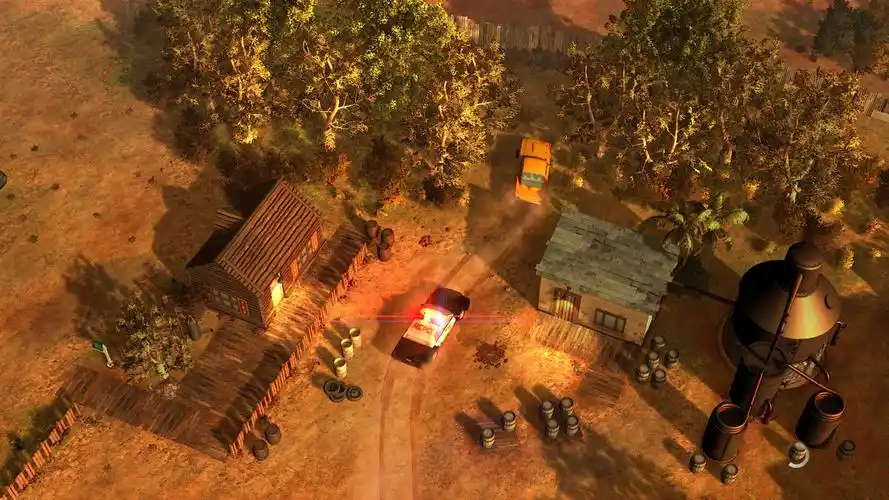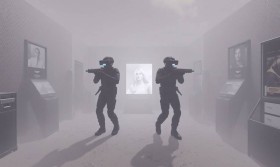Title: Redefining Heavy Machinery Training: "Caterpillar Operator Simulator VR" Unveils Expansive Construction Missions Update
The future of heavy equipment training and simulation is here, and it’s more immersive than ever. Caterpillar Inc., in collaboration with leading simulation software developers, has launched a significant update to its groundbreaking Caterpillar Operator Simulator VR, focusing squarely on Construction Missions. This update isn't just an incremental improvement; it's a transformative leap that redefines how operators learn, practice, and master their craft in a risk-free, highly realistic virtual environment.
VRTraining #HeavyEquipment
For years, the construction, mining, and infrastructure industries have faced a critical challenge: a growing skills gap. Experienced operators are retiring, and training new ones on multimillion-dollar machines is incredibly costly, time-consuming, and fraught with safety risks. Traditional training methods often involve reading manuals, watching videos, and limited hands-on time under strict supervision. The Caterpillar Operator Simulator VR was developed to bridge this gap, and this latest update specifically targets the complex, dynamic world of construction site operations.
FutureOfConstruction #SimulatorTech
What’s New in the Construction Missions Update?
The core of this update is a suite of new, meticulously designed mission-based scenarios that move beyond basic machine operation. Instead of simply learning how to manipulate controls, users are now thrust into the role of a site operator with specific goals, deadlines, and challenges.
-
Multi-Stage Project Missions: Gone are the days of isolated tasks. The update introduces comprehensive projects that require sequential execution. For example, a mission might begin with site preparation: using a CAT D11T Dozer to clear and grade the land. Once approved by the virtual foreman, the operator must then switch to a CAT 336 Excavator to dig precise foundation trenches to exact engineering specifications. Finally, the mission culminates with operating a CAT 730 articulated dump truck to haul and place fill material. This end-to-end process teaches project flow and machine interoperability.
-
Dynamic Environmental Conditions: Real construction doesn’t happen in a vacuum. The new missions incorporate dynamic weather and time-of-day systems. Operators might have to navigate a grading mission during a heavy downpour, which affects traction and visibility, or complete a loading task in low-light dusk conditions, requiring the proper use of machine lights. These variables train operators to adapt their techniques to real-world challenges.
-
Precision and Efficiency Scoring: The simulator now grades performance on more than just completion. A new analytics engine evaluates precision (e.g., how closely the grade matches the design blueprints), efficiency (fuel consumption, cycle times), and safety (avoiding virtual obstacles, proper machine setup). This data-driven approach provides quantitative feedback, allowing trainees to see exactly where they can improve and fostering a culture of excellence and efficiency from the very beginning.

-
Enhanced Physics and Damage Modeling: The realism is turned up to eleven. The updated physics engine more accurately simulates soil displacement, hydraulic response, and load dynamics. Crucially, a new damage model is integrated. Poor operation has consequences; dropping a load too aggressively, colliding with structures, or ignoring machine limits can result in virtual damage, leading to mission failure and cost penalties. This powerfully reinforces the importance of careful, professional operation.
ImmersiveLearning #CaterpillarVR
The Impact on Operator Training and Safety
The benefits of this VR simulator update are profound and multi-faceted.
- Unparalleled Safety: Trainees can make mistakes—from tipping a machine on an unstable slope to misjudging a swing radius—without any real-world danger. This "safe failure" environment is invaluable for building muscle memory and situational awareness before ever touching a physical machine. It instills critical safety protocols as a fundamental part of the operation, not an afterthought.
- Reduced Costs: Training on actual equipment consumes fuel, incurs maintenance costs, and requires a dedicated, supervised site. VR training drastically reduces these expenses. Companies can train more operators more frequently, ensuring a higher level of competency across their workforce without the associated operational costs and downtime.
- Bridging the Skills Gap: By making training more accessible, engaging, and effective, this technology is a powerful tool for attracting a new generation of tech-savvy operators. The gamified nature of mission-based learning, with clear objectives and scores, increases engagement and knowledge retention compared to traditional methods.
JobSiteSafety #OperatorTraining
A Glimpse into the (Virtual) Job Site
Imagine putting on a VR headset and being transported to a bustling urban construction site. Your task is to excavate a basement adjacent to an existing structure. You hear the rumble of your virtual CAT Next Gen Excavator. You look down and see the familiar controls, perfectly replicated. You must carefully dig to the specified depth, avoiding the underground utilities highlighted on your in-cab display and ensuring the trench walls are properly sloped for safety. The pressure is real, but the stakes are virtual. This is the powerful, immersive experience Caterpillar is now offering.
The "Construction Missions" update for the Caterpillar Operator Simulator VR is more than a software patch; it's a statement of intent. It signifies a shift towards holistic, integrated training that values not just control proficiency, but project understanding, environmental adaptation, and operational excellence. It sets a new industry standard, proving that virtual reality is no longer a novelty but an essential, powerful tool for building the skilled workforce of tomorrow, today.


















